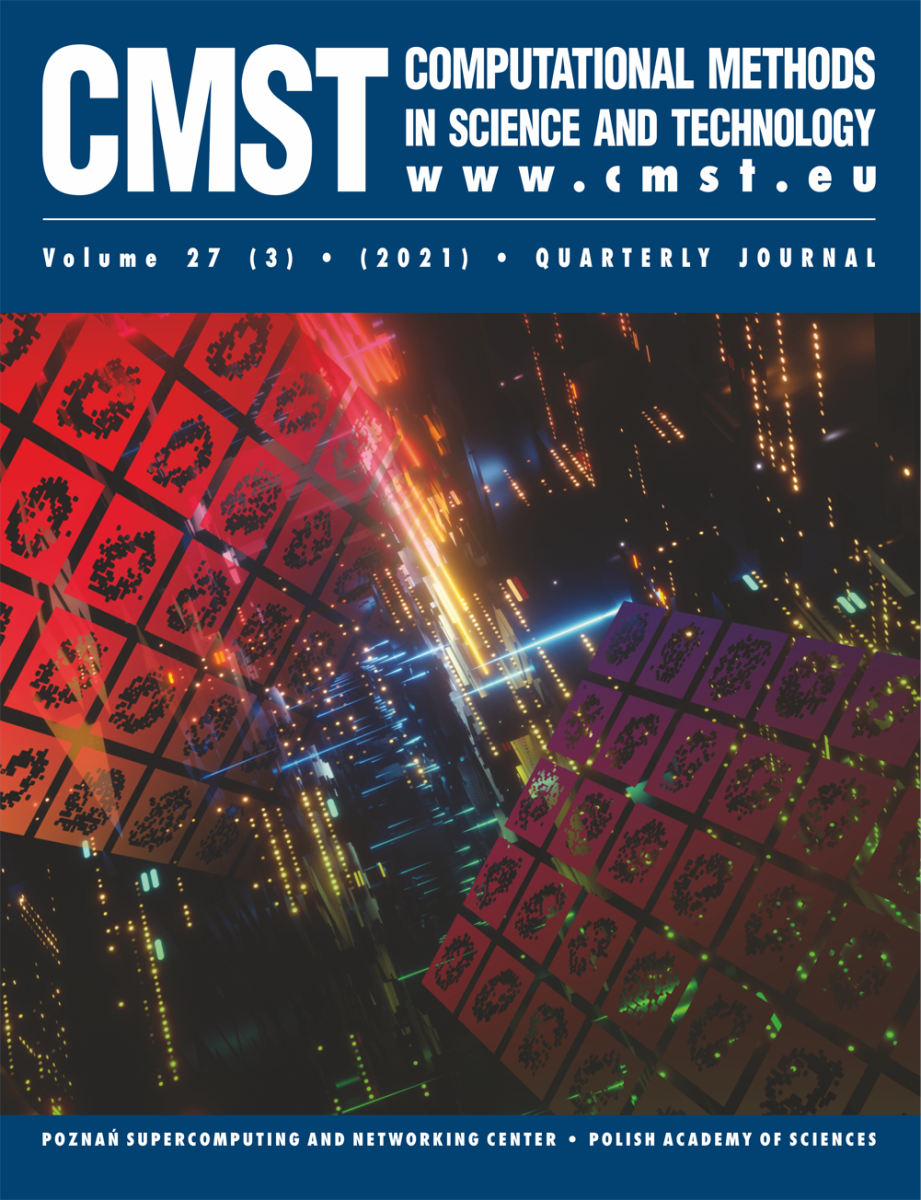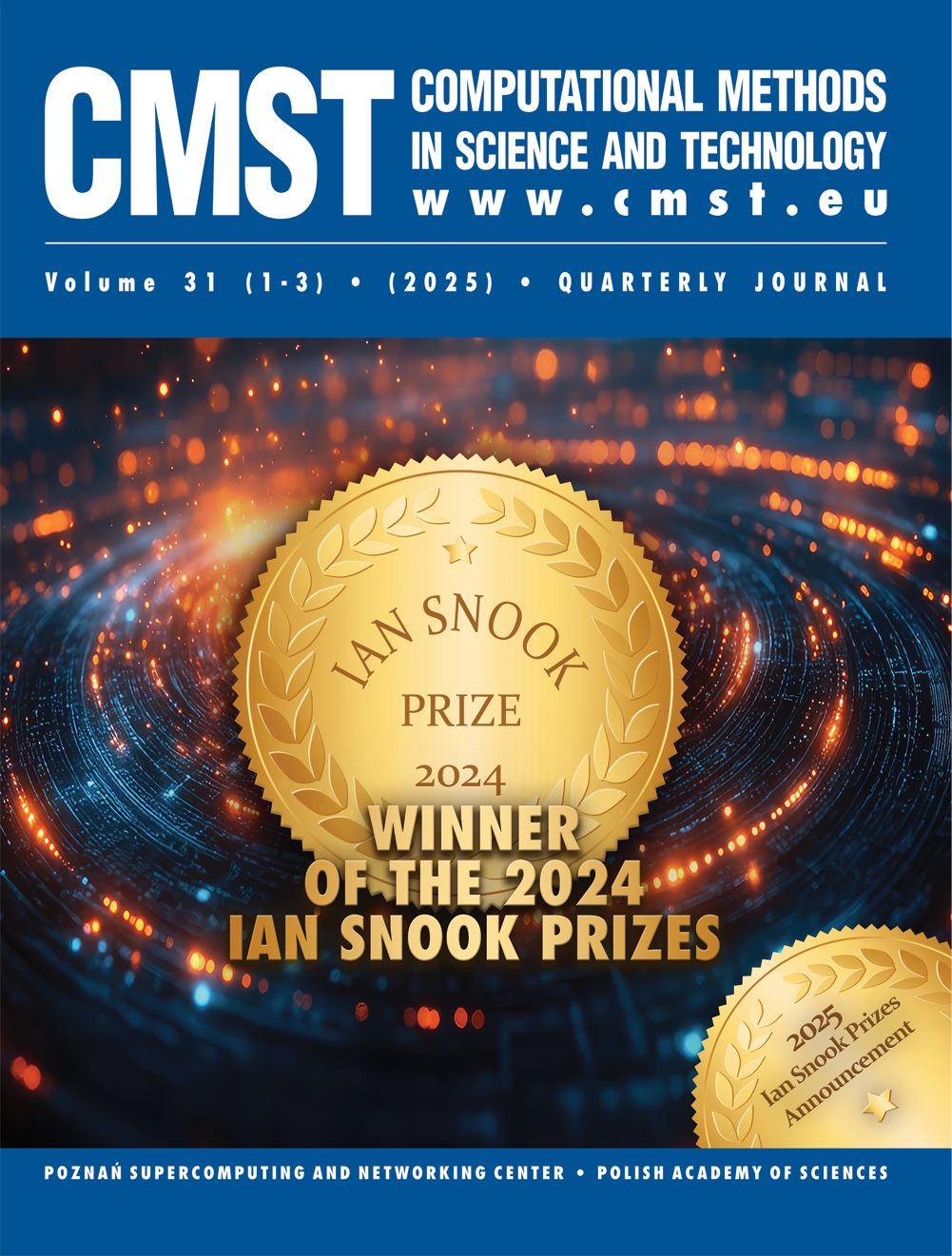Studies on the Cutting Edge Wearing of Nitrided Milling Blades During the Wood Machining Process
Porankiewicz Bolesław 1, Idzikowski Ireneusz 2, Małdziński Leszek 3, Ostrowska Karolina 3
1 Emeritus from The Agricultural University of Poznań
ul. Wojska Polskiego 28, 60-637 Poznań, Poland
E-mail: poranek@amu.edu.pl2 FAMEG Sp. z o.o.
ul. 11 Listopada 2, 97-500 Radomsko3 Poznan University of Technology
Faculty of Civil and Transport Engineering
ul. Piotrowo 3, 60-965 Poznań, Poland
Received:
Received: 27 May 2024; revised: 22 June 2024; accepted: 24 June 2024; published online: 27 June 2024
DOI: 10.12921/cmst.2024.0000015
Abstract:
This article presents the results of works aiming at observations of wearing high speed steel (HSS) milling blades, coated with application of ZeroFlow gas nitriding method, after peripheral machining of dry beech wood. The thin nitrided layer on a HSS blades of HS18-0-1, T grade, and HS6-5-2, T-M grade influences the nature and value of changes in VBf , VBw , VBs, and ρmi, cutting edge wearing parameters, as the cutting distance increases. From the point of view of minimum cutting edge round up, the HS18-0-1 steel grade seems to be superior under the HS6-5-2 steel grade. From the perspective of the cutting edge recessions measured on the: (*) clearance surface VBf , and (**) rake surface VBs, the HS6-5-2 steel grade seems to be slightly better. The cutting edge recession measured on the bisector of the wedge angle VBw appeared to have similar values for both examined steel grades, independent of the values of other controlled parameters: Ls – the cutting path; βf – the cutting edge wedge angle; BaN – the Barkhausen noise indicator. An increase in the Barkhausen noise indicator slightly decreases the cutting edge recessions expressed by VBf , VBw and VBs parameters.
Key words:
beech wood, cutting edge dullness parameters, high speed steel, peripheral milling, ZeroFlow gas nitriding
References:
[1] C. Kato, J. Bailey, J. Stewart, T. Arai, Y. Sugimoto, The Wear Characteristics of a Woodworking Knife with Vanadium Carbide Coating only on the Back Surface II, Mokuzai Gakkaishi 40(12), 1317–1326 (1994).
[2] T. Morita, K. Banshoya, T. Tsusumoto, M. Kawamitsu, Y. Murase, Characteristics of Diamond-Coated Cemented Carbide Tools in Milling of Particle Board, Proc. 13th International Wood Machining Seminar, Vancouver, Canada, 687–698 (1997).
[3] I. Fuchs, Ch. Raatz, Study of Wear Behavior of Specially Coated (CVD, PACVD) Cemented Carbide Tools while Machining Wood-Based Materials, Proc. 13th International Wood Machining Seminar, Vancouver, Canada, 709–732 (1997).
[4] L. Chekour, C. Nouveau, C. Chala, M-A. Djouadi, Duplex treatment of 32CrMoV13 steel by ionic nitriding and triode sputtering: application to wood machining, Wear 255, 1438–1443 (2007).
[5] B. Porankiewicz, Zużycie ostrzy narzędzi przy frezowaniu płyt wiórowych, PTPN, Poznań (2000).
[6] B. Porankiewicz, Tępienie się ostrzy i jakość przedmiotu obrabianego w skrawaniu płyt wiórowych, Dział Wydawnictw Akademii Rolniczej w Poznaniu, Prace habilitacyjne, Nr 341 (2003).
[7] B. Porankiewicz, I. Idzikowski, Wear of high speed steel duplex coated blades after planing dry wood, Inżynieria Materiałowa 36(1), 42–46 (2015).
[8] L. Małdziński, Controlled Nitriding using a Zeroflow process, Heat Treating Progress 7(5), 53–57 (2007).
[9] L. Małdziński, J. Tacikowski, Concept of an economical and ecological process of gas nitriding of steel, Harterei Technische-Mitteilungen 61(6), 295–302 (2006).
[10] L. Małdziński, M. Bazel, M. Korecki, A. Miliszewski, T. Przygoński, Controlled nitriding using a ZeroFlow Industrial experiences, Heat Treating Progress 9(4), 19–22 (2009).
This article presents the results of works aiming at observations of wearing high speed steel (HSS) milling blades, coated with application of ZeroFlow gas nitriding method, after peripheral machining of dry beech wood. The thin nitrided layer on a HSS blades of HS18-0-1, T grade, and HS6-5-2, T-M grade influences the nature and value of changes in VBf , VBw , VBs, and ρmi, cutting edge wearing parameters, as the cutting distance increases. From the point of view of minimum cutting edge round up, the HS18-0-1 steel grade seems to be superior under the HS6-5-2 steel grade. From the perspective of the cutting edge recessions measured on the: (*) clearance surface VBf , and (**) rake surface VBs, the HS6-5-2 steel grade seems to be slightly better. The cutting edge recession measured on the bisector of the wedge angle VBw appeared to have similar values for both examined steel grades, independent of the values of other controlled parameters: Ls – the cutting path; βf – the cutting edge wedge angle; BaN – the Barkhausen noise indicator. An increase in the Barkhausen noise indicator slightly decreases the cutting edge recessions expressed by VBf , VBw and VBs parameters.
Key words:
beech wood, cutting edge dullness parameters, high speed steel, peripheral milling, ZeroFlow gas nitriding
References:
[1] C. Kato, J. Bailey, J. Stewart, T. Arai, Y. Sugimoto, The Wear Characteristics of a Woodworking Knife with Vanadium Carbide Coating only on the Back Surface II, Mokuzai Gakkaishi 40(12), 1317–1326 (1994).
[2] T. Morita, K. Banshoya, T. Tsusumoto, M. Kawamitsu, Y. Murase, Characteristics of Diamond-Coated Cemented Carbide Tools in Milling of Particle Board, Proc. 13th International Wood Machining Seminar, Vancouver, Canada, 687–698 (1997).
[3] I. Fuchs, Ch. Raatz, Study of Wear Behavior of Specially Coated (CVD, PACVD) Cemented Carbide Tools while Machining Wood-Based Materials, Proc. 13th International Wood Machining Seminar, Vancouver, Canada, 709–732 (1997).
[4] L. Chekour, C. Nouveau, C. Chala, M-A. Djouadi, Duplex treatment of 32CrMoV13 steel by ionic nitriding and triode sputtering: application to wood machining, Wear 255, 1438–1443 (2007).
[5] B. Porankiewicz, Zużycie ostrzy narzędzi przy frezowaniu płyt wiórowych, PTPN, Poznań (2000).
[6] B. Porankiewicz, Tępienie się ostrzy i jakość przedmiotu obrabianego w skrawaniu płyt wiórowych, Dział Wydawnictw Akademii Rolniczej w Poznaniu, Prace habilitacyjne, Nr 341 (2003).
[7] B. Porankiewicz, I. Idzikowski, Wear of high speed steel duplex coated blades after planing dry wood, Inżynieria Materiałowa 36(1), 42–46 (2015).
[8] L. Małdziński, Controlled Nitriding using a Zeroflow process, Heat Treating Progress 7(5), 53–57 (2007).
[9] L. Małdziński, J. Tacikowski, Concept of an economical and ecological process of gas nitriding of steel, Harterei Technische-Mitteilungen 61(6), 295–302 (2006).
[10] L. Małdziński, M. Bazel, M. Korecki, A. Miliszewski, T. Przygoński, Controlled nitriding using a ZeroFlow Industrial experiences, Heat Treating Progress 9(4), 19–22 (2009).

